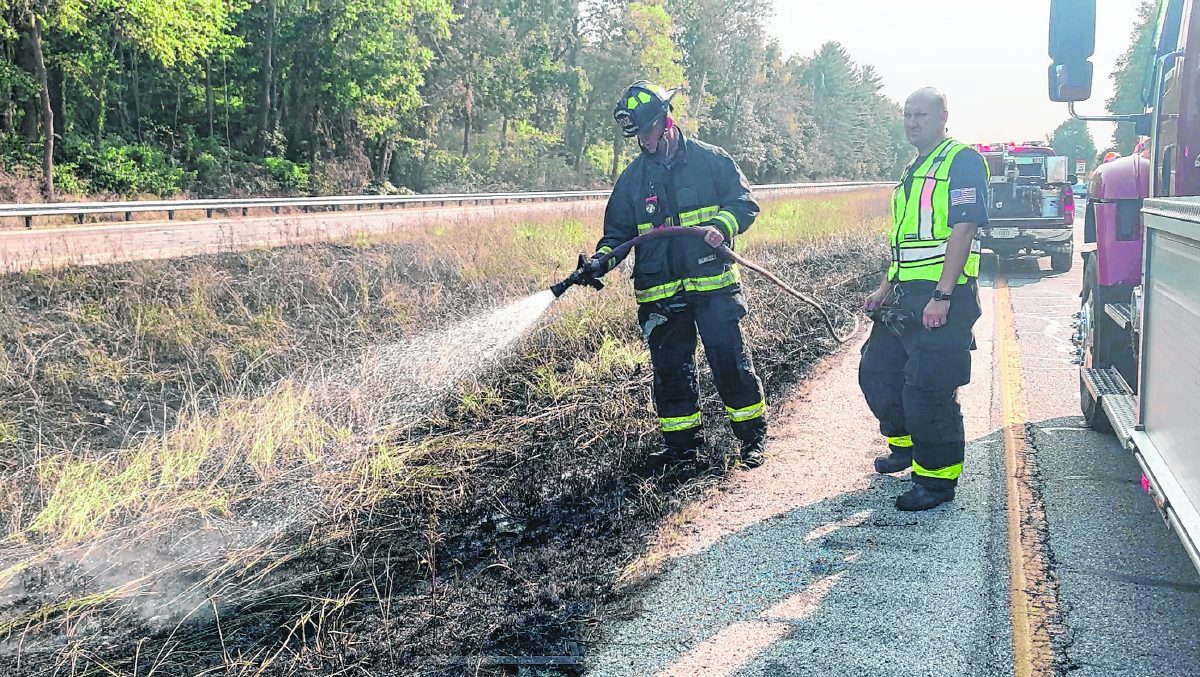<p>It was a busy weekend for local firefighters.</p><p>Central Indiana is in the midst of a dry spell, and local fire departments are warning residents that conditions are leading to an increase in fires. </p><p>Fire crews responded to four field and mulch fires related to the dry weather this weekend, said Mike Pruitt, deputy chief of the Bargersville Community Fire Department.</p><p>One of the fires, at Smokey Row Road and State Road 144 in Bargersville, was from an open burn in the field. That fire was put out quickly, he said.</p>[sc:text-divider text-divider-title="Story continues below gallery" ]<p>Another started in a grass median along State Road 37, near the Morgan County line, after a passerby threw a cigarette out of their car, Pruitt said. It was also extinguished quickly, but fires in the middle of highways can be very dangerous for drivers and firefighters on the scene, he said.</p><p>"It can cause accidents. The smoke can cause hazardous visibility issues," Pruitt said. "It’s dangerous for our crews working in the middle of a highway." </p><p>Two more erupted at businesses in Franklin and Whiteland, also due to discarded cigarettes, he said. </p><p>All four fires can be attributed to the weeks-long dry spell central Indiana is experiencing, Pruitt said. The Indianapolis area has produced .04 inches of rainfall in September so far; the average is about three inches this time of year, according to the National Weather Service.</p><p>Dry weather can cause fires to ignite easily from activities such as burning items openly, or from small actions such as brush fires in a backyard or tossing cigarettes on the ground, Pruitt said. Fires that start under these conditions are harder to contain, spreading faster across fields and into structures, especially considering the high winds and low humidity, he said.</p><p>Field fires are particularly dangerous for first responders due to how quickly it can spread. Crews use equipment and tactics designed for field fires specifically, such as staying toward the back of the fire where the field is already burned, and bringing in as much manpower as possible to help, Pruitt said.</p><p>But the fires, especially in tall cornfields, can be dangerous. </p><p>"Standing in a cornfield is extremely brutal on us because your visibility is reduced," he said. "And a good wind can quickly drag that fire to another field."</p><p>Although there are no burn orders across the county right now, Pruitt asks all residents to be cautious. And, residents should use ash trays instead of disposing cigarettes on the ground, he said. </p><p>"We’re discouraging from burning things right now because the conditions are just too dangerous," Pruitt said. "The last thing you want is to set a corn or soy bean field on fire, especially in 2020, with how hard it’s been on our farmers already."</p><p>Johnson County follows Indiana’s open burning laws, which regulate residents to only burn items such as clean wood, paper products or clean petroleum products. Garbage and leaves cannot be burned, and those who live in private residential areas can only burn items inside a barrel-like container. </p><p>In general, if any resident plans to burn large items outside, they should contact the local fire department at least a day in advance, Pruitt said.</p><p>"If it creates a nuisance, we have to respond, and either we have to extinguish it, or you do," Pruitt said. </p><p>Pruitt added that in this dry weather, fire embers can smolder in the ground for days before igniting again, particularly in mulch, he said. The best solutions include shoveling up the area that burned, and pouring water all over it to be sure everything is extinguished.</p>
Nobody covers Johnson County and the surrounding areas like the Daily Journal.
30 S. Water St., Second floor, Suite A, Franklin, IN 46131
Phone: (317) 736-7101
Toll free: (888) 736-7101
All text, photos, graphics, artwork and other material on this site are copyrighted and may not be published, broadcast, rewritten or redistributed without permission.
Contact us: [email protected]
© Copyright AIM Media Indiana, LLC





